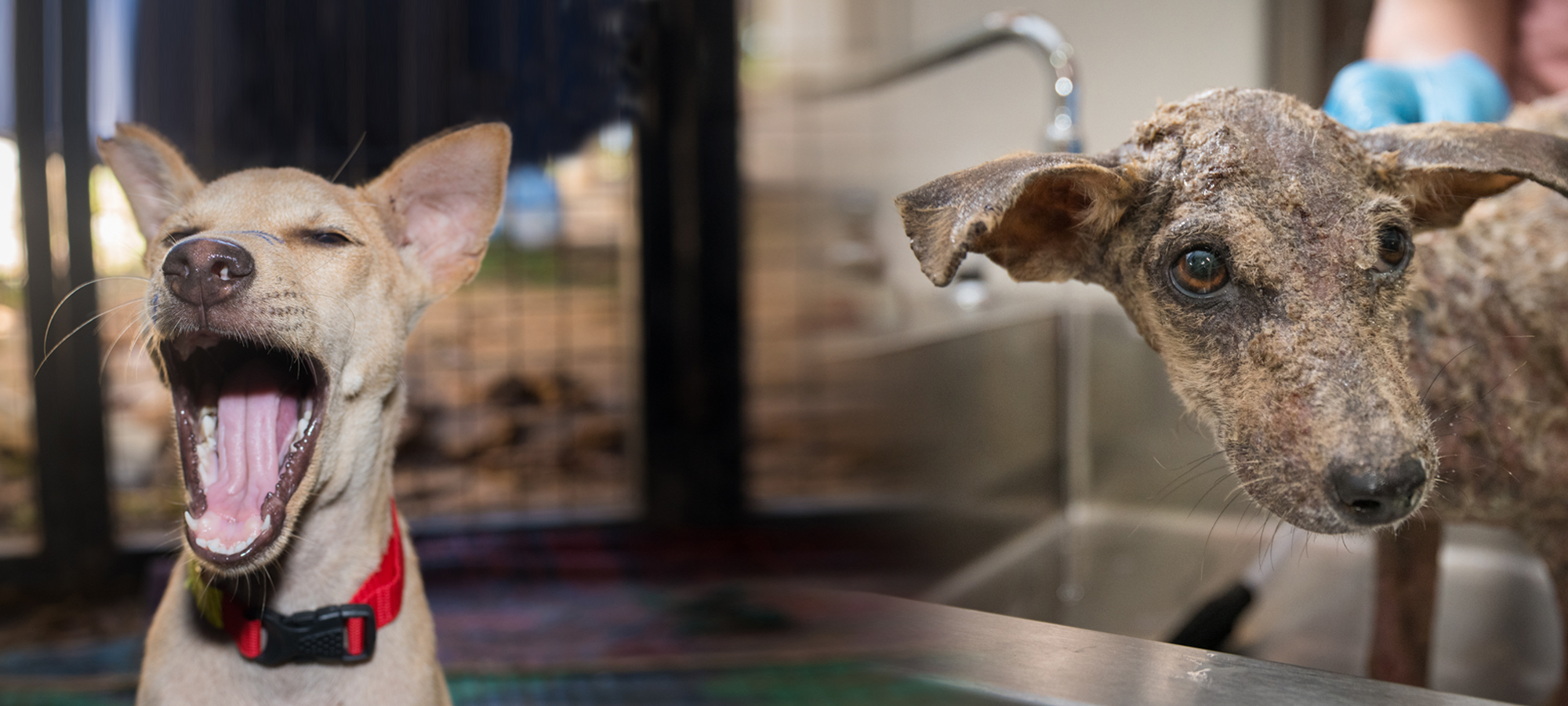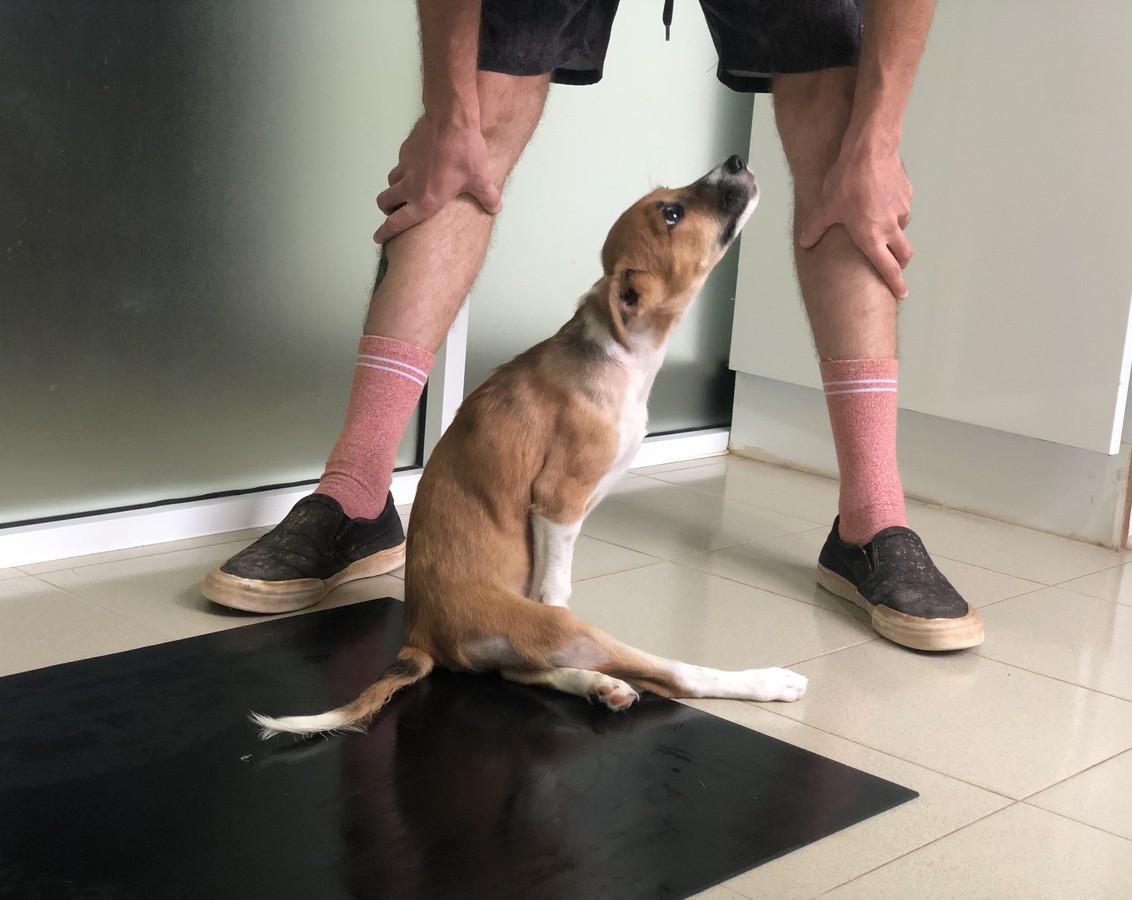
Here at WECare, we regularly admit a huge number of animals with disabilities, ranging from dogs that require limbs amputating after a road traffic accident, to cats with paralysis caused by spinal damage from being attacked by another animal.
Thankfully, modern veterinary medicine has come a long way, so there are many options to explore when treating disabled patients. While we’ve had a huge number of success stories – even with patients that we thought may never walk again – there are, of course, some animals who just don’t improve, no matter how hard we try (and you better believe we try!).
Euthanasia is always the last resort, but it’s one that’s sometimes necessary to avoid prolonged physical and/or mental suffering. We know it’s is a controversial issue and one that divides animal lovers, so we want to explain why we’re not ‘no-kill’ and never will be.
What happens to disabled patients at WECare?
WECare has a lengthy grace period for every disabled patient that has a chance of survival, with our dedicated team giving them the absolute best chance of getting better, following strict veterinary protocols.
We utilise everything in our toolbox, including physio, hydrotherapy and electrical stimulation therapy. We’re also lucky enough to have access to Western-standard diagnostic equipment (we still pinch ourselves that we have X-ray!!) so we can assess exactly what’s going on with each patient and treat accordingly. So long as the animal is showing signs of improvement, we will keep going with treatment. Euthanasia is only considered when the patient stops improving to the point where keeping them alive as they are would be painful, uncomfortable or distressing for them.
Thankfully, animals with mild mobility issues or those who have had one limb amputated (affectionately called ‘tripods’) often go on to lead happy and healthy lives – you’ll actually see quite a few tripods merrily trotting about the streets of Sri Lanka!
We’re not a shelter, but we do have a number of animals in our garden awaiting rehoming, and this is where rehabilitated patients go when putting them back on the street would be dangerous. Unfortunately, not many people over here are up for adopting animals with disability issues, but we would never euthanise an animal just because they’re less adoptable. In fact, we have a few ‘unconventional’ animals awaiting adoption who have been with us for years – rest assured they all have a safe home at WECare until a suitable forever home arises.
Sadly, however, it’s not always ethical to keep an animal alive, but the decision to euthanise is never taken lightly, especially when we’ve spent weeks or months caring for and bonding with them. Nevertheless, it’s our job to do what’s best for our patients, regardless of how much grief and distress it may cause us.
We don’t show these intimate moments on Instagram, but each animal is given a dignified, peaceful and loving departure, with a very gourmet last meal (where appropriate).
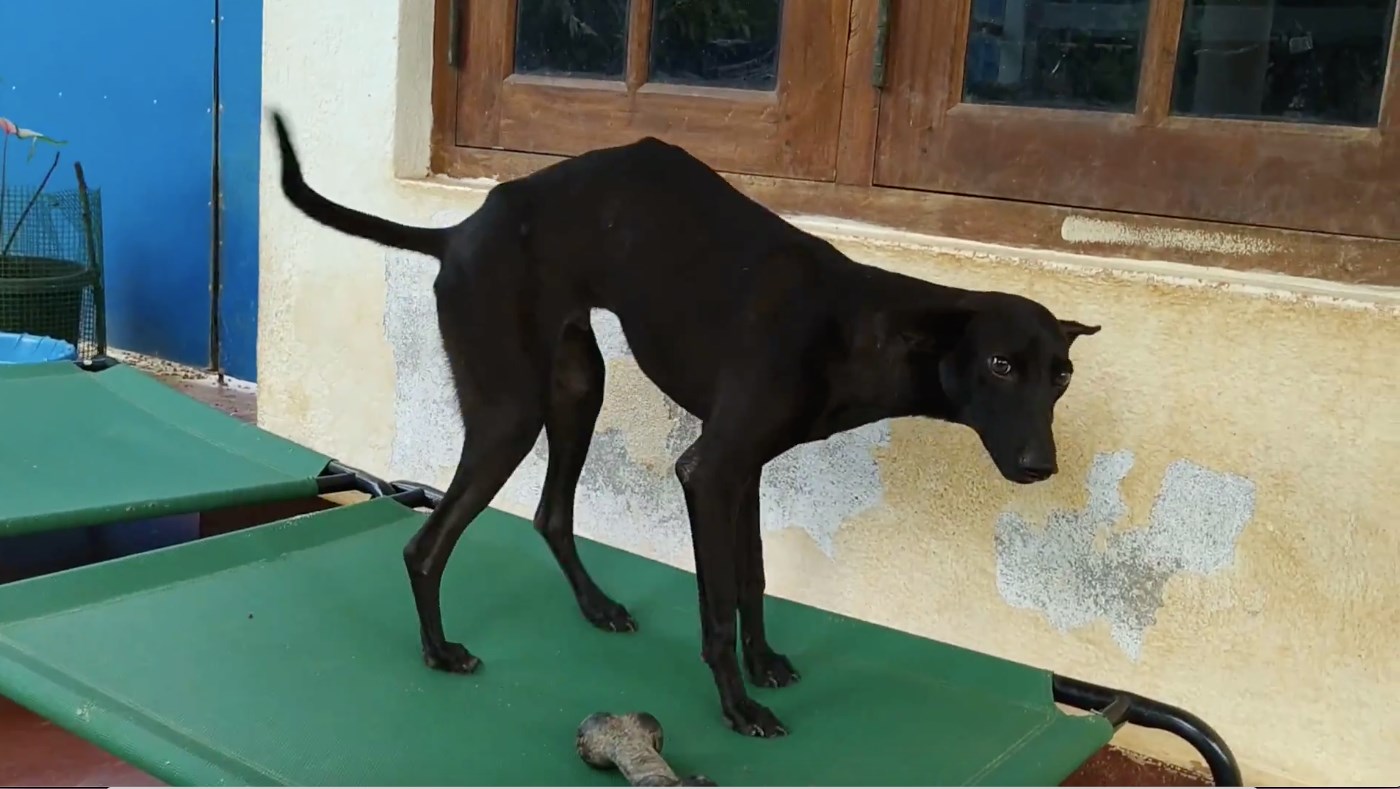
Euthanasia is never black and white, and some cases are pretty complicated. Take Nemo, for example. He’s a kitten who rocked up in March 2020 with hind limb paralysis and painful wounds as a result of dragging himself around. After lots of physio, Nemo was eventually able to walk and stand (in a very wobbly fashion), so we persisted with our efforts, which we always do when an animal is showing signs of improvement. Unfortunately, Nemo was unable to urinate by himself, which meant expressing his bladder twice a day. We’d hoped that this would improve with his mobility, but sadly, it never did.
On paper, Nemo was a candidate for euthanasia because of his bladder, but we were too far down the line to make that tough decision – his walking was getting better by the day and he had such a lust for life that we just couldn’t make that call. So, he lived in a special cattery at WECare, bouncing round like a pro while requiring 1:1 care with twice-daily bladder expression, as well as constant monitoring for lower urinary tract issues (which occur as a result of said bladder problems). We’d hoped to find Nemo a home, but adopting him would have been a huge commitment and we were never able to find someone willing to take on the challenge.
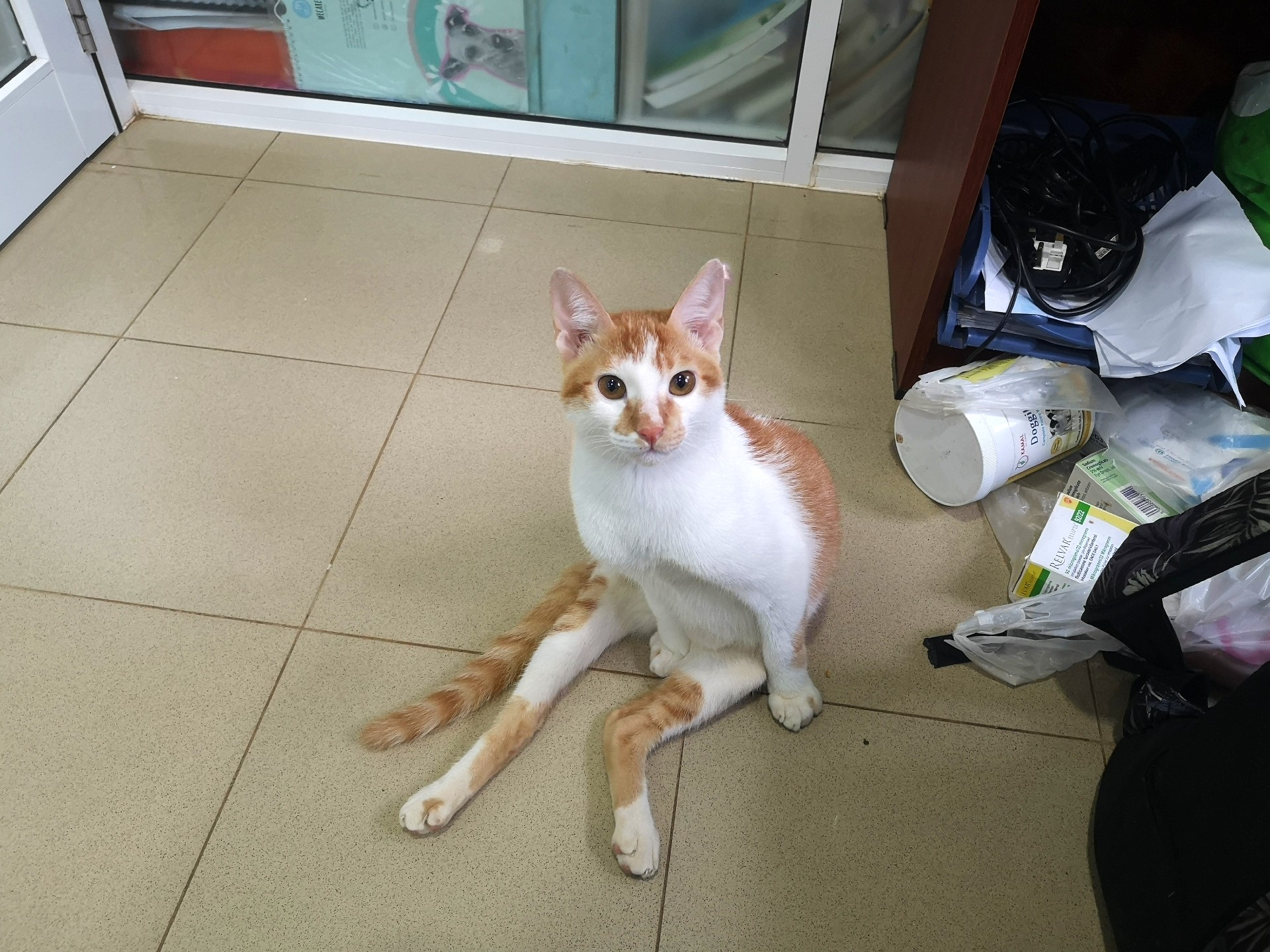
However, Nemo was happy, spending his days playing and snoozing with his best mate, Chester. Unfortunately, Chester passed away in 2023 due to kidney failure and sadly, Nemo was never the same again. Over the course of 18 months, Nemo became increasingly grumpy, withdrawn, and aggressive. He began to freak out during his bladder expressions, which were becoming incredibly difficult to do as his bladder was getting worse, and it was clearly hurting him. We then became concerned about the very real possibility of accidentally rupturing his bladder during this process.
We’d tried everything we could — meds, diets, nutraceuticals, but nothing was working anymore. We introduced Nemo to other cats and dogs, but he was utterly miserable, in pain, and giving us clear signs that he was ready to go. The decision wasn’t easy — we cannot even begin to tell you how attached we were to this cat! — but his welfare had to take priority over our grief. So, last month we let Nemo find peace and rejoin his soulmate Chester. He was surrounded by nothing but love in his last moments.
We hope Nemo’s story shows how complicated euthanasia is — it’s never a split-second decision, and there are so many factors involved. We spent years rooting for Nemo, but we’ll be the first to admit that we often felt overwhelmed with his specialist care, despite being lucky enough to have an entire team of highly-skilled vets and nurses. We just can’t imagine how hard it is for shelters who have hundreds of animals like him, when they have fewer qualified staff than we do. We never gave up on Nemo and gave him his best possible chance of living a happy, healthy life, but the truth is sometimes you have to know when it’s time to say goodbye. Nemo was suffering — despite receiving the best possible care — and it would have been incredibly unethical to allow that to continue.
Rest in peace, sweet boy.
‘No-kill’ goes against the Five Freedoms of animal welfare
The Five Freedoms is a set of standards created by the UK’s Farm Animal Welfare Council (now called Animal Welfare Committee) in 1965 to ensure humane treatment for every living being. It has since been adapted by the Association of Shelter Veterinarians and made relevant to pets in shelters. These freedoms are:
- Freedom from hunger and thirst
- Freedom from discomfort
- Freedom from pain, injury or disease
- Freedom to express normal behavior
- Freedom from fear and distress
If an animal’s limited mobility prevents them from heading to a water bowl by themself, causes them regular pain or discomfort, leads to further medical complications, infection or disease, prevents them from playing or being able to escape a perceived threat, it raises serious questions about its welfare.
We’ve seen countless disabled dogs become incredibly frustrated and depressed because they can’t fulfil normal dog behaviours, and it’s just not fair to keep them alive for the sake of it.
“I follow a dog shelter on Instagram that has disabled dogs and they seem happy?”
Some animal shelters have dedicated disabled areas where paralysed, partially paralysed or animals with multiple limbs missing reside. You might see posts of them trotting around in wheelchairs or being cuddled by volunteers, but this is often unfortunately a very misleading snapshot of what actually goes on in their daily lives.
Shelters frequently only have access to a small number of wheelchairs, which are shared around the animals who need them. They may only get to use that chair for a short period each day, while they’re left to drag themselves around (if they’re even able to) the rest of the time. To avoid issues like sores, wheelchairs should also be properly fitted to each individual animal, which isn’t possible when such a limited number are available.
While animals in carts may seem happy in the jolly 10-second reels you see on Instagram, you can imagine how frustrated and miserable they are the rest of the time, when they’re left to their own (very limited) devices. It breaks our hearts knowing the reality of the situation and that people are being misled into thinking they’re happy.
Dogs in carts also need to be supervised 1:1 at all times in case they tip over, which just isn’t possible in shelters that house hundreds or thousands of dogs.
We’re not throwing shade at these types of shelters – we know they come from a place of love and would have a wheelchair and staff member for each animal if they could. However, unfortunately, most charities have very limited resources – mobility carts don’t come cheap (they’re also not easy to come by in a country like Sri Lanka) and it’s nigh on impossible to raise enough funds to pay the necessary amount of staff, let alone find enough staff!
Another common issue is misinterpretation of animal behaviour. We’re all guilty of anthropomorphising animals, but people often mistake cries of fear or discomfort for happiness and excitement. Sadly, we see this a lot in video clips posted to social media.
Paralysed animals are at risk of open wounds and sores
An animal dragging itself around may appear sufficiently mobile, but the constant friction can lead to complications, like painful – and relentless – sores and open wounds. These are incredibly uncomfortable for the animal and in a hot, humid country like Sri Lanka, open wounds can easily lead to infection or maggot infestation.
Then there’s the issue of going to the toilet. Paralysed animals often lose control of their bowels and bladders, so will go to the toilet wherever they are, leaving them covered in their own faeces or urine. This can lead to infection and urine scalds, which cause serious irritation and discomfort.
This is obviously even worse for those animals that can’t move unaided, as they’ll often be laying in their own poo or wee for periods of time, especially overnight.
On top of this, it’s undignified. Let’s be real, animals can be gross (no offense, fluffy ones!), but as much as they may love slurping up another critter’s bowel movements, rolling in cow pats or jumping in bogs, they’re really not too fond of their own bodily fluids. Would you want to be covered in your own poo, unable to clean it?
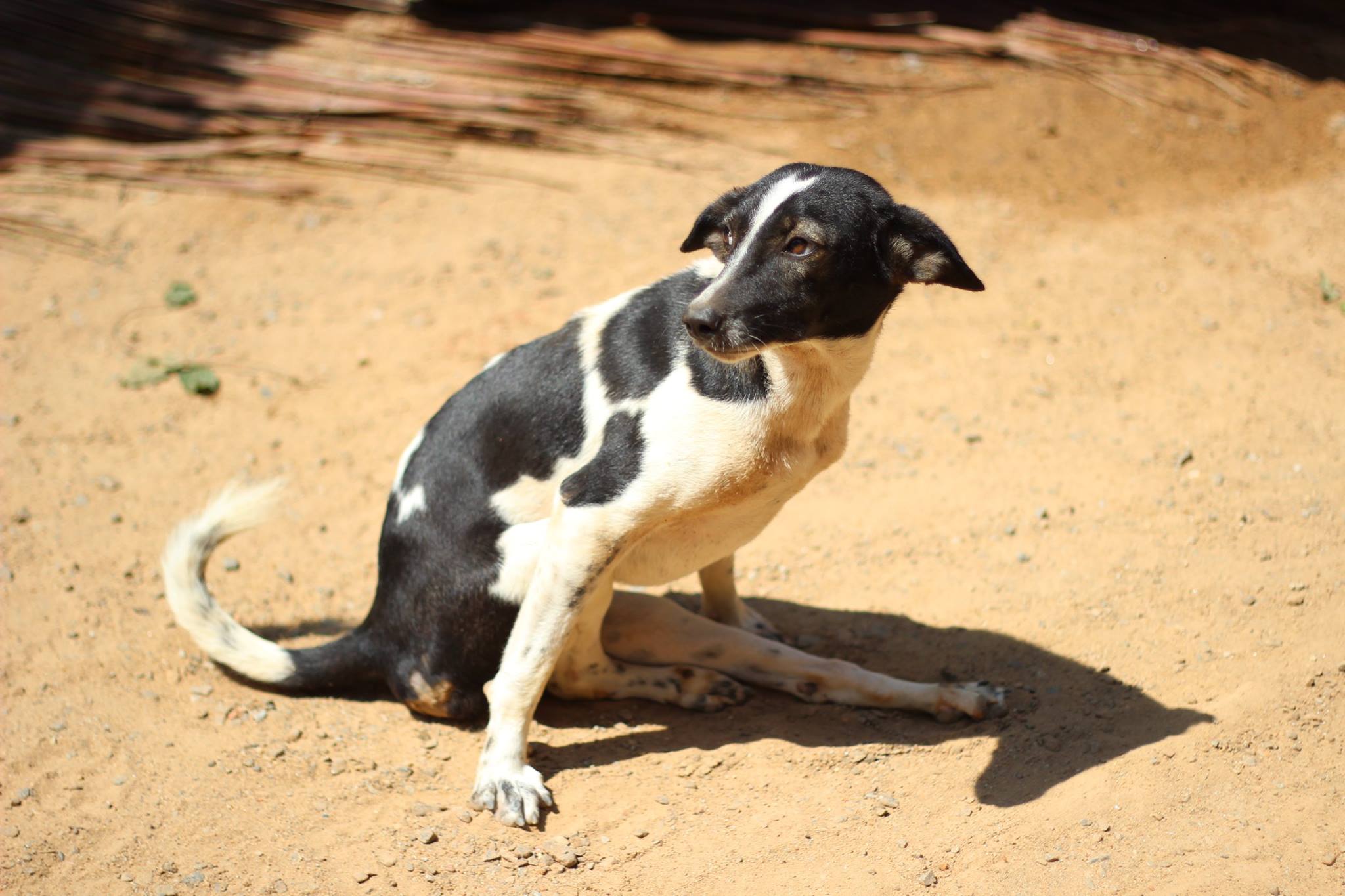
Disabled animals need round-the-clock 1:1 care
Disabled animals need 1:1 round-the-clock care to ensure their comfort and safety – they require someone there day and night to keep them clean, healthy and out of harm’s way. Some paralysed animals will also require their bladders expressing two to three times a day, which is a huge commitment and must be performed by a trained staff member. If this isn’t done properly, the animal is at risk of contracting painful UTIs or – even worse – suffering from a potentially-deadly ruptured bladder.
Studies show that the more frustrated a dog feels, the more aggressive they can become, which can lead to fights. Imagine having limited mobility and being attacked by other dogs, especially when there’s no-one there to scoop you to safety. This can lead to a dog living in a state of anxiety and fear.
It’s not a sensible use of charity funds
WECare has a never-ending waiting list of animals in the local area that require our attention, but we’re restricted by kennel space, staffing and financial resources. Keeping one disabled animal alive and giving it the care it needs would mean us turning away multiple other dogs in urgent need of care. In an ideal world, we would do it all, but we have to be realistic – we just can’t. We don’t know a single charity that can afford 1:1 care for hundreds of animals.
We know shelters that keep disabled dogs mean well and do it from a place of love, but it’s not something we agree with from a veterinary viewpoint. ‘No-kill’ is a very misunderstood term that’s often romanticised – keeping an animal alive isn’t the same as successul rehabilitation.
Disabled animals in shelters are very glamourised on social media, but as we all know, nothing is ever as it seems on Instagram – we encourage you to think beyond the ‘cute’ posts and question if what you’re seeing is as wholesome as it seems.
The bottom line is that it’s quality, not quantity when it comes to an animal’s life, and our job is – and always has been – to prevent unecessary suffering. It’s why we do what we do.
Share this post
Go on, give it a share and spread the word about WECare to all your online pals!
Related reads
